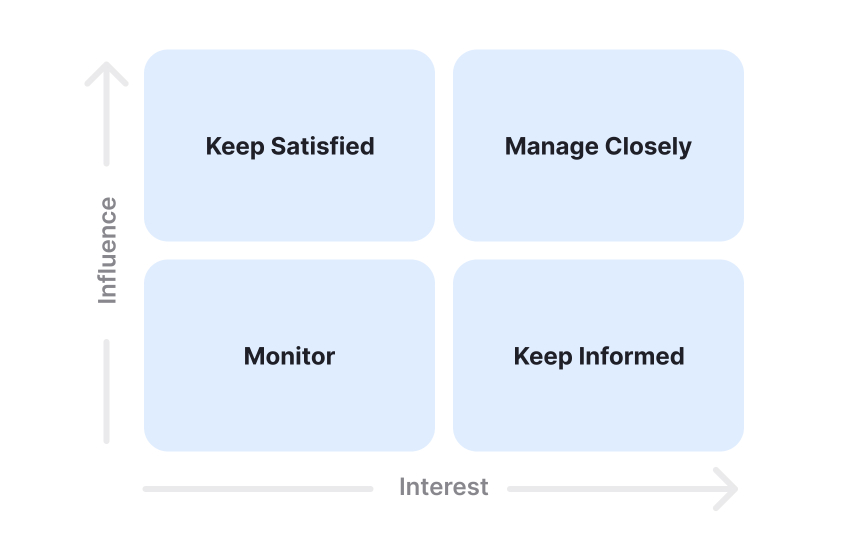Map stakeholders
Stakeholder mapping identifies and categorizes stakeholders based on their influence and interest in a project, helping teams prioritize communication and engagement.[1] Begin by identifying all stakeholders: direct participants like team members and project leads, internal stakeholders such as executives and adjacent teams, and external stakeholders including clients and end-users.
Consider each stakeholder's level of influence, interest, and potential impact on project success. Create a power-interest grid to prioritize stakeholder engagement strategies. For instance, in launching new software, stakeholders could include:
- High influence, high interest: Executives and key clients (need regular updates)
- High influence, low interest: Legal or compliance teams (need occasional updates)
- Low influence, high interest: End users and support teams (benefit from informative updates)
- Low influence, low interest: Peripheral departments (minimal updates needed)
Develop specific communication plans for each stakeholder group. Technical teams might need detailed specifications and architecture documents, while business stakeholders prefer high-level progress reports and ROI metrics. Document each stakeholder's preferred communication channel, frequency of updates, and key concerns to ensure effective engagement throughout the project lifecycle.

